Analyzer
Select a Simulation
After clicking on the icon for the analyzer in the side bar, a table opens containing all successful simulations that have been performed in the current user's workspace. A simulation to be analyzed must be selected by clicking on it. To proceed, click the button labeled Analyze.
Analyze the Results
A simulation can consist of various runs, each of which is individually represented in the analyzer. Using the navigation buttons (arrows) in the top right corner, users can easily switch between the different runs of a simulation.
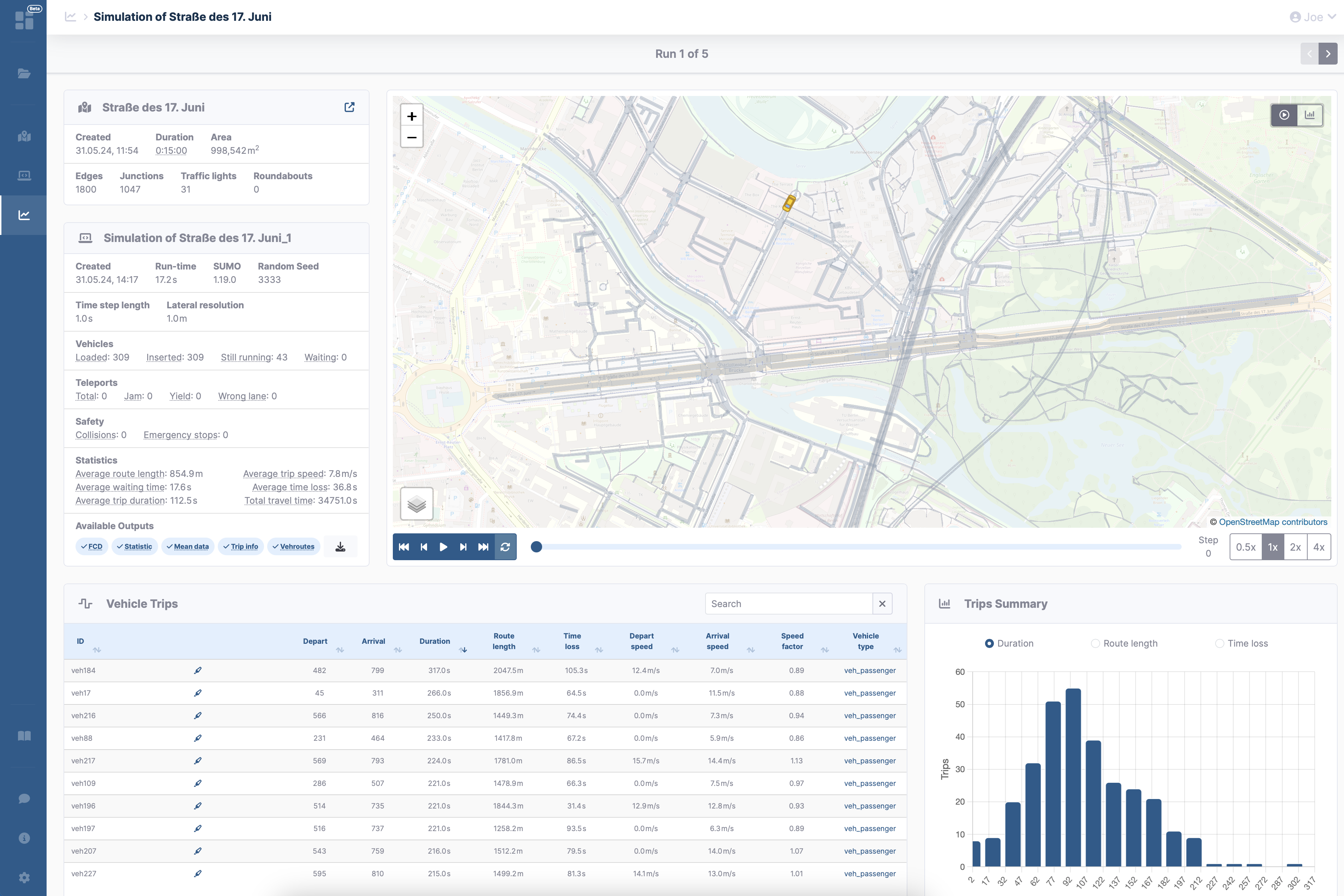
The analyzer presents a new window displaying a map section of the used scenario along with various data from the simulation. In addition to the map, there are several information panels, which will be explained in more detail in the next subsections.
Scenario Properties
The scenario properties panel displays various facts and figures of the scenario used for the simulation. This includes properties such as the duration and size of the selected area, as well as the number of edges, junctions, and traffic lights in the scenario.
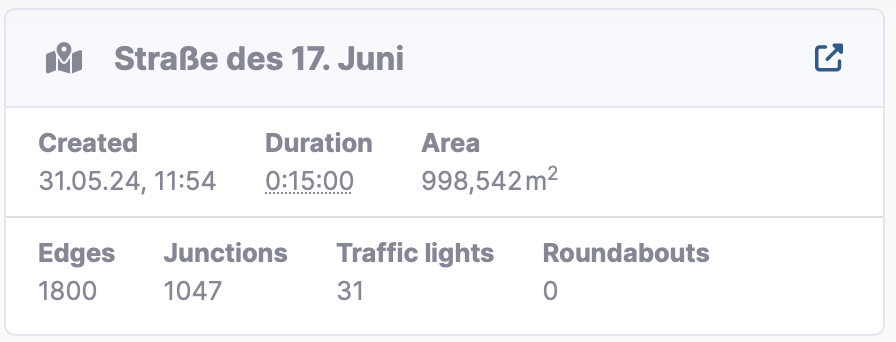
Simulation Run Properties
The Simulation Run Properties Panel is more comprehensive and provides not only the basic data of the simulation run, but also some key figures. For example, this includes the number of vehicles used, the number of necessary teleports, and the number of collisions. These figures can serve as an indication of the complexity of the scenario or potential traffic congestions.
In addition, statistical information about the simulation run is also displayed. The average trip speed or the average route length may be relevant when comparing different scenarios.
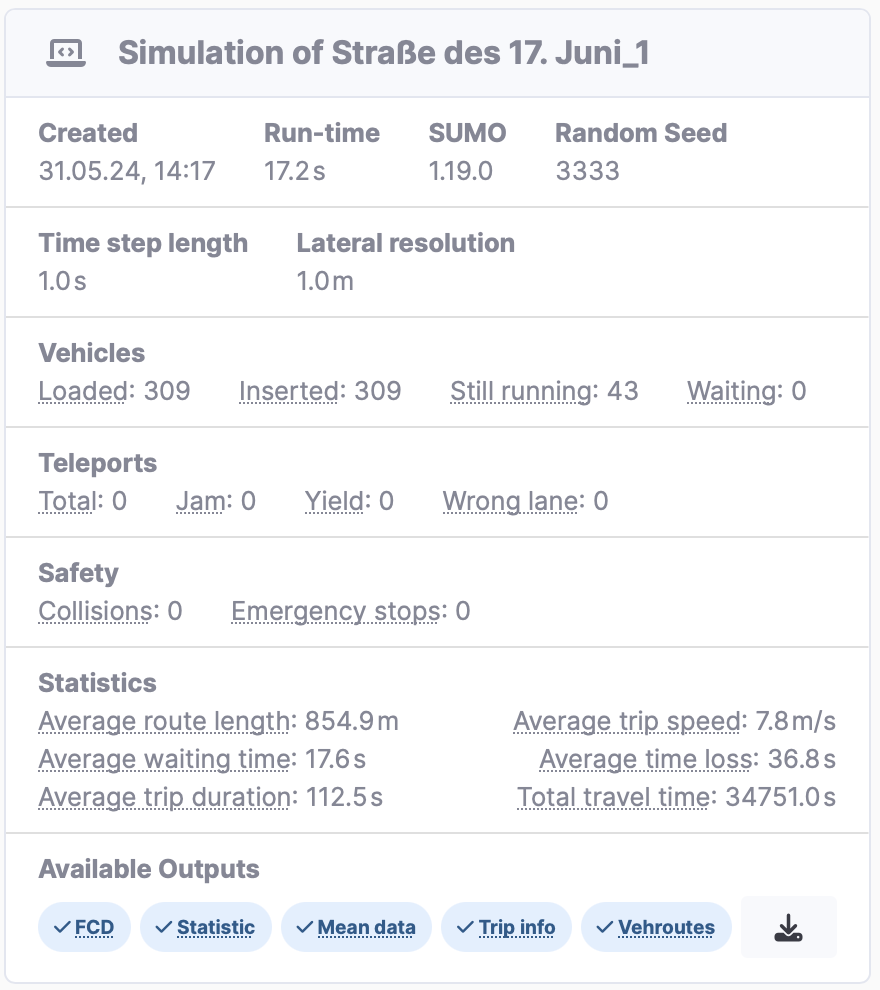
At the bottom of the panel, it is indicated which outputs of SUMO were activated for the simulation. Moreover, there is a button for downloading the outputs of this simulation run as a ZIP archive.
Interactive Map
The interactive map has two modes: playback mode and statistics mode. Users can switch between these modes using the buttons in the top right corner of the map.
Playback Mode
In Playback Mode, the Analyzer provides a simulation playback option. This feature allows users to view the movements of all vehicles within the simulation, enabling quick identification of bottlenecks and providing valuable insights into system performance.
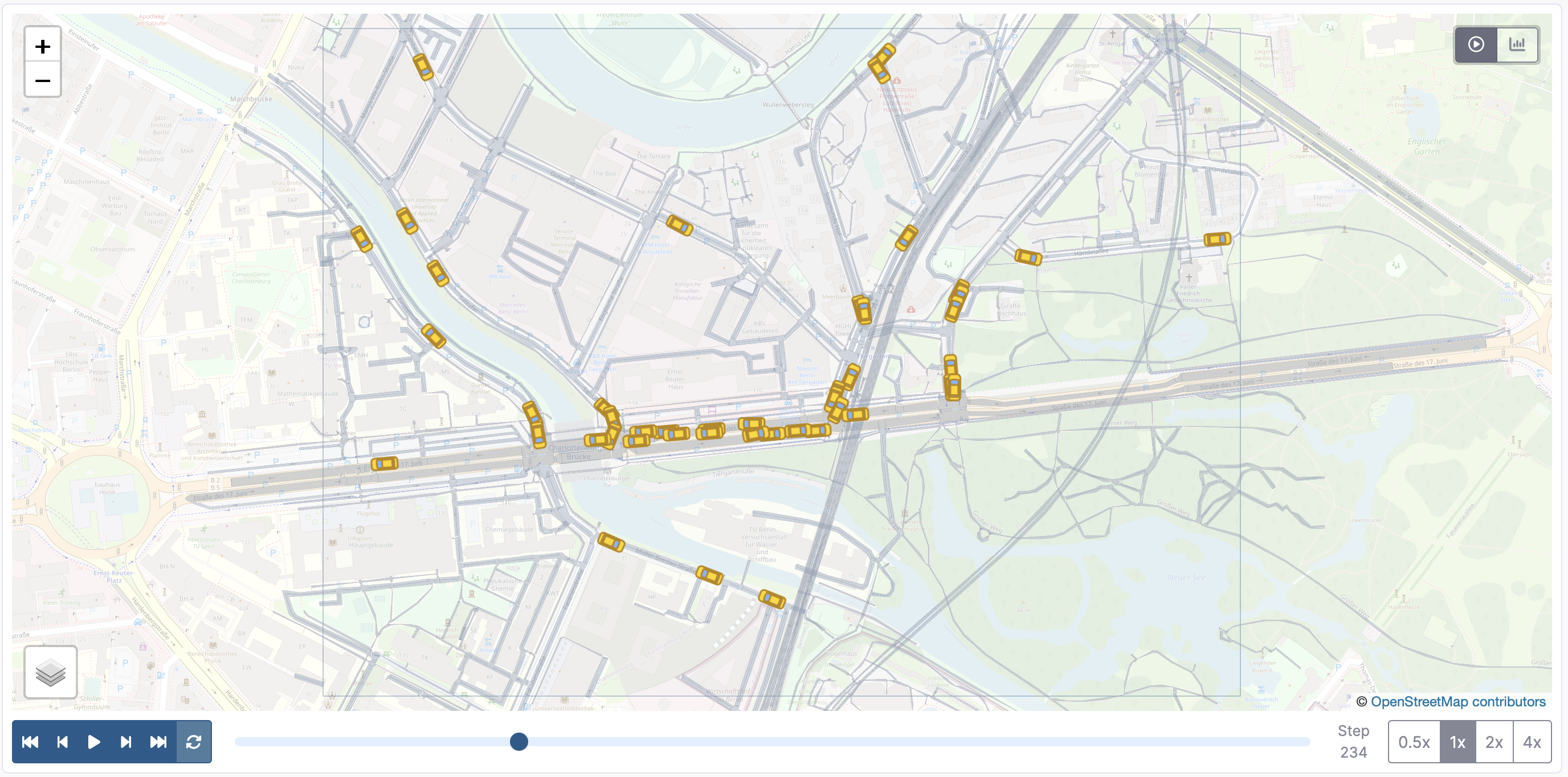
Hovering over a specific vehicle during playback displays detailed information about that vehicle. Users can adjust playback speed using the buttons at the bottom of the interface and can also jump back and forth or pause the playback as needed.
Statistics Mode
In Statistics Mode, the interactive map displays the road network for the scenario and can highlight specific edges or trips. The map includes buttons on the left for zooming in, zooming out, and navigating around the map.
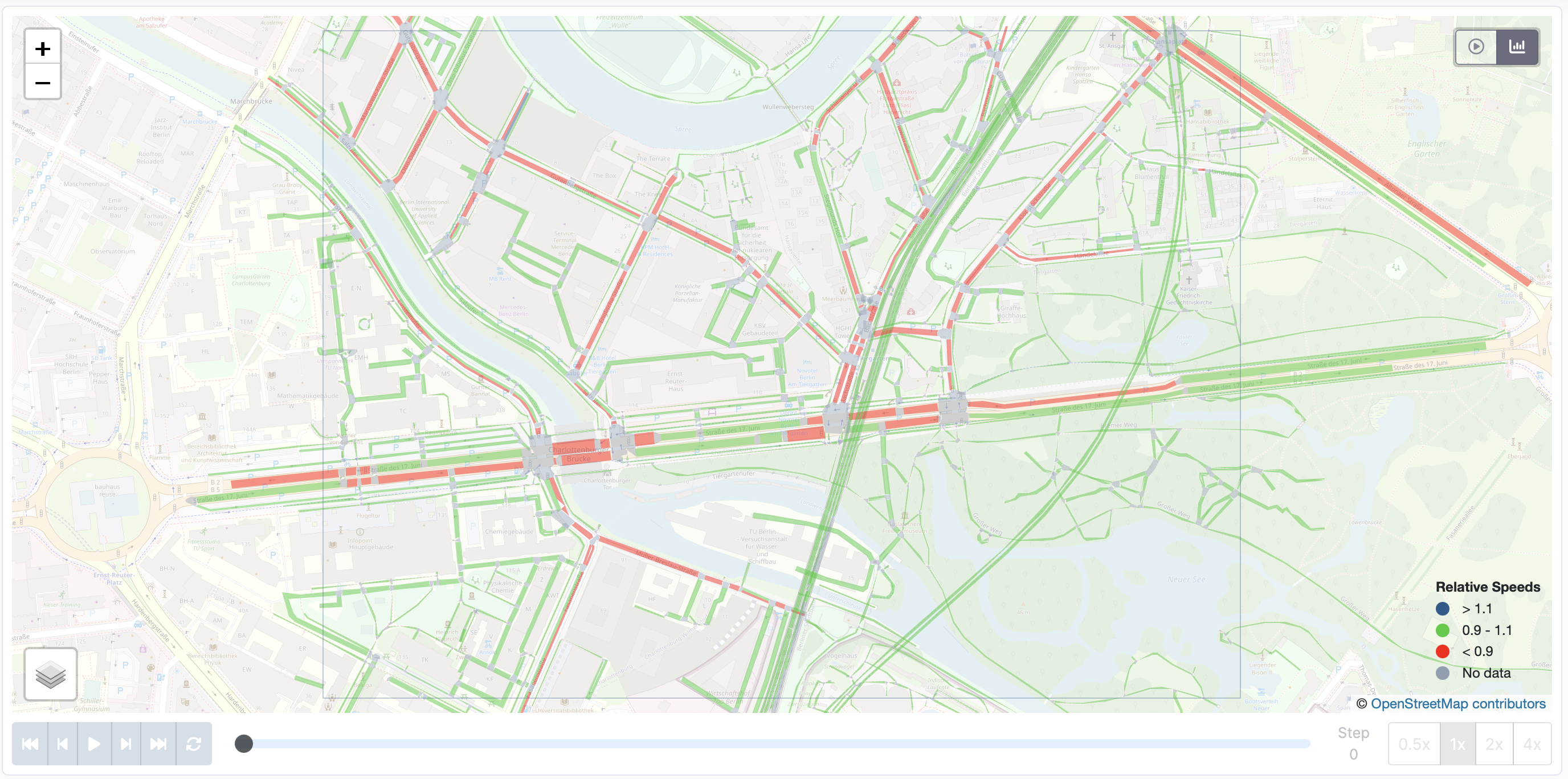
Edges on the map can be colored to represent various simulation metrics. A button at the bottom left allows users to activate different colorings for visualizing these metrics.
Currently supported metrics include:
- Relative Speeds to Speed Limit: This shows whether vehicles are driving significantly below the speed limit (e.g., due to congestion) or if the road is clear.
- Traffic Volume: This displays the number of vehicles per hour for each edge.
By using these features, users can gain a comprehensive understanding of the simulation data and easily access relevant information.
Vehicle Trips
Efficient access to all trips in a scenario is critical for gaining a better understanding of traffic demand.
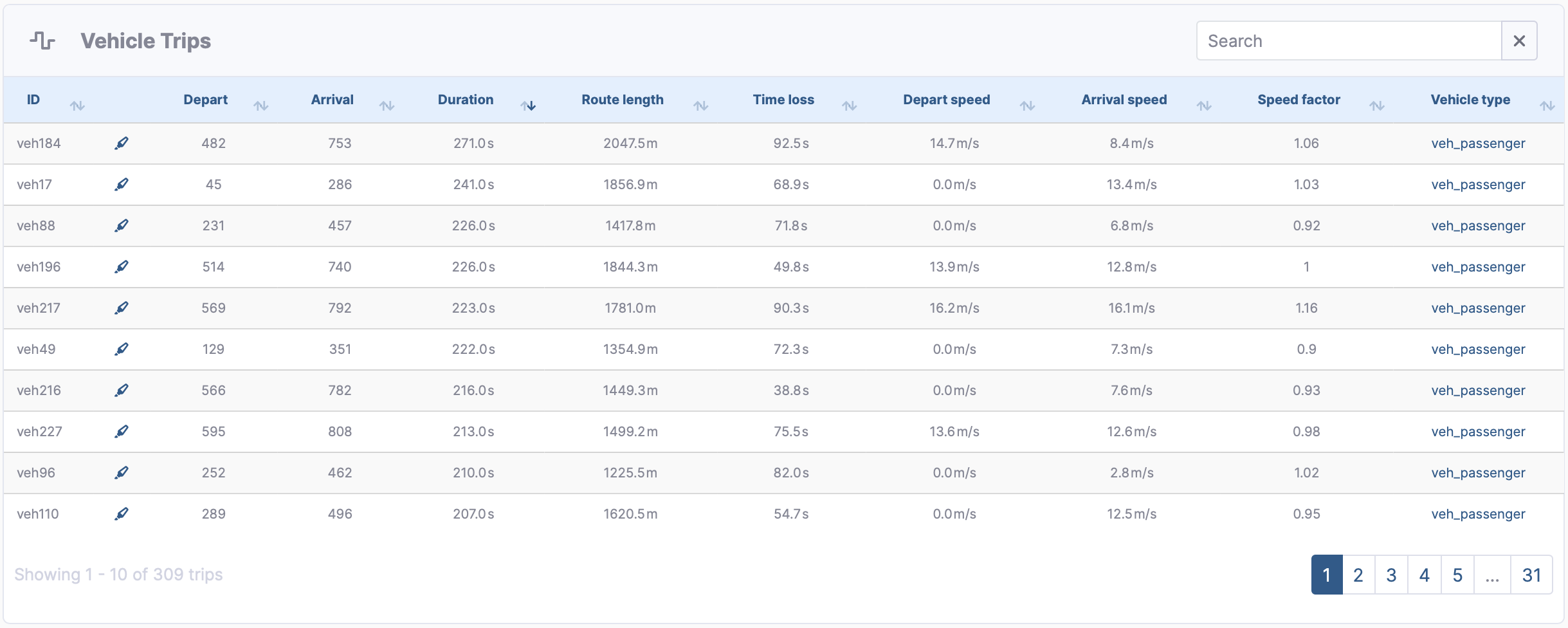
To facilitate this, all available trips in the simulated scenario are presented in a table that allows users to search, filter, and sort the available data according to their needs. This feature enables users to quickly find and analyze specific trips of interest.
Clicking on the vehicle type opens a pop-up window displaying the properties of that type.
Understanding the spatial distribution of all trips is critical, but it's also essential to quickly visualize the distribution of other trip properties.
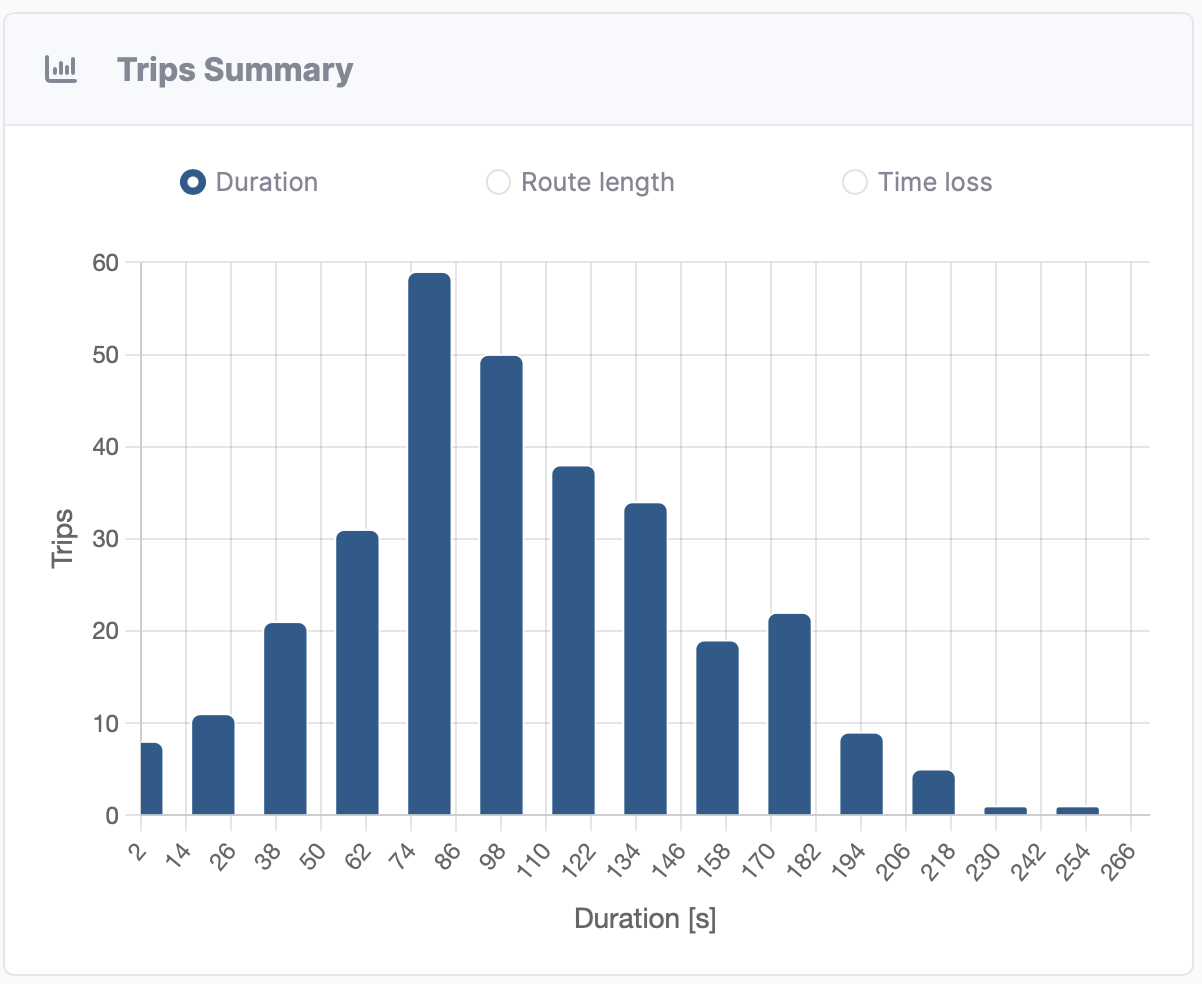
For this purpose, we provide a trips summary diagram that can display the distribution of trip duration, route length, and time loss for all trips in the dataset.
Edges
Similar to the table displaying all trips and their properties, there is a second table in the analyzer containing all edges and their properties.
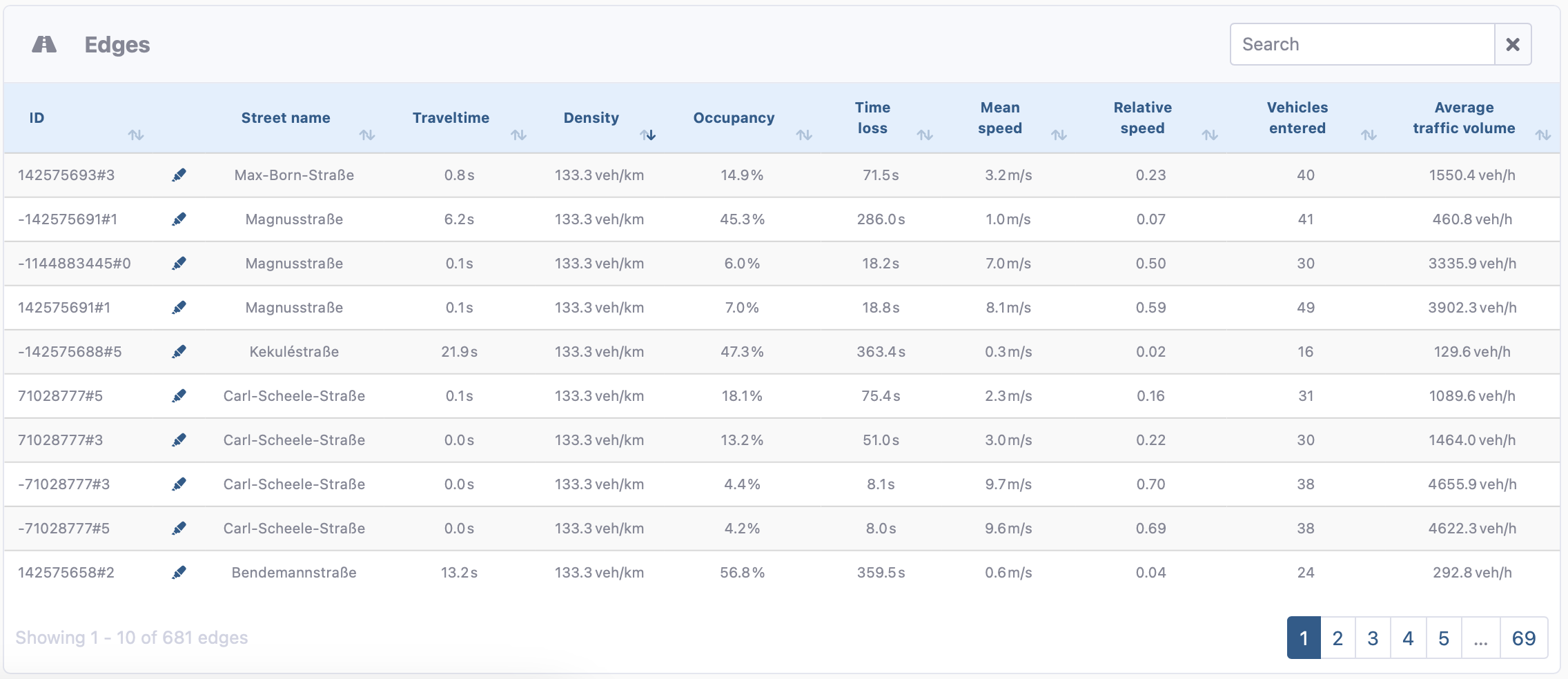
This table provides the same ability to filter, sort, or search for specific edges.